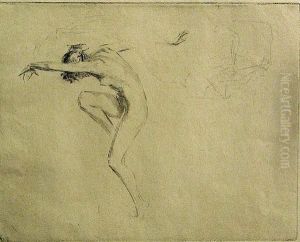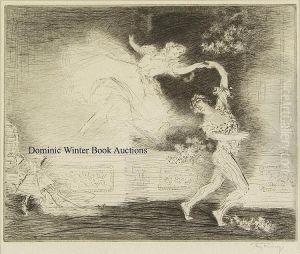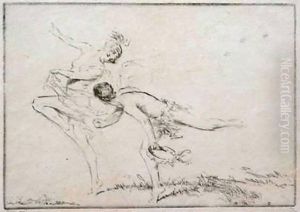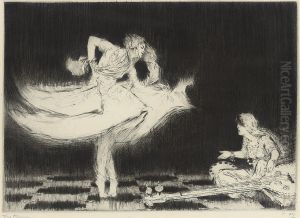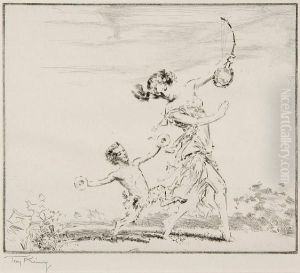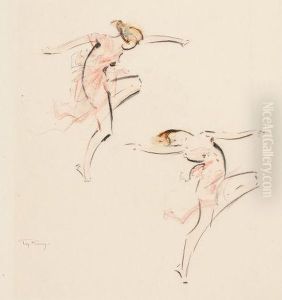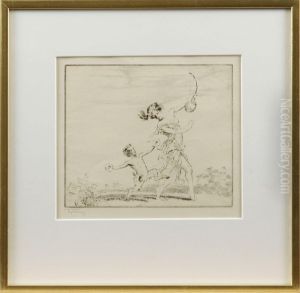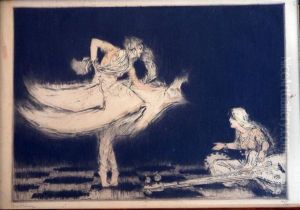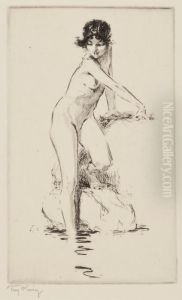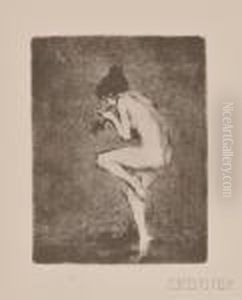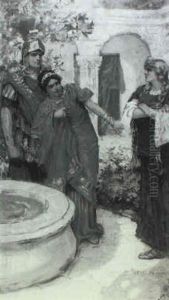Troy Kinney Paintings
Troy Kinney was an American artist, etcher, and writer, best known for his works that captured the essence of dance during the early 20th century. Born on November 1, 1871, in Kansas City, Missouri, Kinney developed an early interest in the arts. He pursued his passion by studying at the Art Students League in New York and later at the Académie Julian in Paris, where he was exposed to the rich cultural scene and the burgeoning art movements of the time.
Kinney's work was deeply influenced by his appreciation for dance and music. Throughout his career, he sought to depict the movement and grace of dancers, particularly those from the world of ballet and modern dance. His etchings and illustrations often featured prominent dancers of his time, capturing the fluidity of their movements and the elegance of their forms. Kinney was skilled at conveying the dynamic nature of dance through the static medium of printmaking.
Aside from his artistic endeavors, Kinney was also a writer and critic. He co-authored books on dance, including 'The Dance: Its Place in Art and Life' with his wife, Margaret West Kinney. His written work and etchings were instrumental in bringing the art of dance to a broader audience and played a significant role in the dance renaissance of the early 20th century.
Kinney's contribution to the arts extended beyond his own creations. He was an advocate for the recognition of dance as a legitimate art form, and he worked tirelessly to promote the appreciation of ballet and modern dance in the United States. His efforts helped to pave the way for future generations of dancers and choreographers.
Troy Kinney's legacy is that of an artist who bridged the gap between visual art and performance, capturing the ephemeral beauty of dance in a way that could be enjoyed and preserved for posterity. His work remains a valuable historical record of the dance aesthetics and prominent performers of his time. Kinney continued to create and inspire until his death on December 29, 1938, in Stamford, Connecticut.
